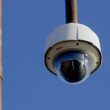Embedded sensors and intelligence on the new edge
Much of what comes together in the Internet of Things depends on the first node in the network, which is most often a sensor. Transformational Industry 4.0 analytics and automation require even better input, which has kept vendors busy trying to bring smarter embedded sensors to market.
The role of smart sensors is looked at even more closely now, as an industry-wide architectural switch is underway that moves more processing to the edge, reducing reliance on “cloud-only” processing. As sensors proliferate, it becomes very difficult to handle all sensor information in the distant cloud, so sensors and the edge nodes they reside upon the need to get smarter.
This is among the drivers leading Allied Market Research projecting the global IoT sensor industry will grow from $12.37 billion to $141.8 billion by 2030, achieving a CAGR of 28% over that period.
As in the past, today’s embedded sensors must measure temperature, humidity, pressure, proximity and a wide assortment of other phenomena. Miniature accelerometers, magnetometers and other devices have come to form complex sensor fusions that combine disparate types of sources.
But now included among options are edge AI devices that handle machine learning at the source, while using far less electrical power than cloud processing alternatives. Though still nascent, lidar and radio waves are also on tap for IoT sensor measurements.
The world that is covered with sensors is expanding. At the same time, the limitations on what is possible are shrinking:
- *Ruggedized IoT sensors connected to IoT gateways are being used to measure and monitor grape crops for wine in California’s Napa Valley, as part of Cisco System’s Industrial Asset Vision platform.
- Bosch Sensortec sensors with onboard AI act as ‘digital noses’ to detect gases, particulates and – a matter of growing concern – airborne viruses.
- The city of Suffolk, Virginia is re-imagining traffic signaling services using Iteris’s ClearMobility platform, which in turn uses Vantage Apex smart sensors that couple high-definition video and four-dimensional radar sensors with integrated AI algorithms.
- NevadaNano’s MPS Mini pairs an on-chip chemical sensor array with an on-chip molecular property spectrometer to detect combustible gases.
Smart Sensors Starting to Learn
“A typical smart sensor usually has four main sections – the sensor itself, an analog-to-digital conversion function, a computational – or microcontroller unit – and a communication engine which today can be either wireless or wired,” according to Raymond Yin, director of technical content at Mouser Electronics, as well as host of Mouser’s “The Tech Between Us” podcast. The variations are many, he cautioned.
For example, many smart sensors have multiple individual sensor types tailored to a specific application. There is also variation in the function of the integrated microcontroller unit (MCU). Some integrated MCUs are merely state machines that control the data conversion process and communication where others are fully running sensor fusion algorithms, he said.
As an example, Yin cited the LSM6DSO32XTR iNEMO Inertial Module from STMicroelectronics, which integrates accelerometers with a gyroscope and temperature sensor, and includes a machine learning core that aids in the detection of applications such as walking, running, and driving.
Power Conservation With Purpose
Manuel Tagliavini, principal analyst covering MEMS and sensors at Omdia, said a smart sensor can be defined as an electronic component that is not only able to read and store physical measurements – such as acceleration, light, flow, humidity, and so on – but is also able to perform more complex operations that could have different purposes.
To read the complete article, visit IoT World Today.

















